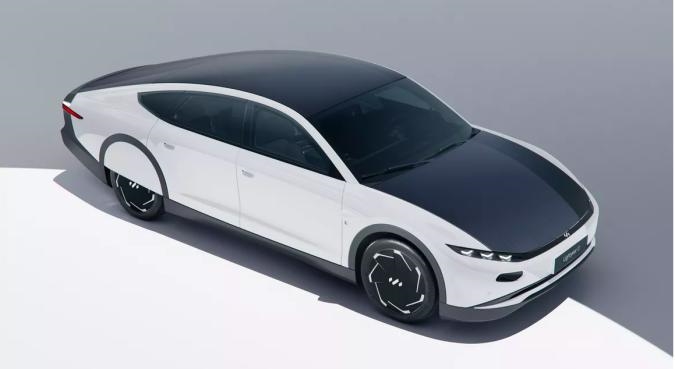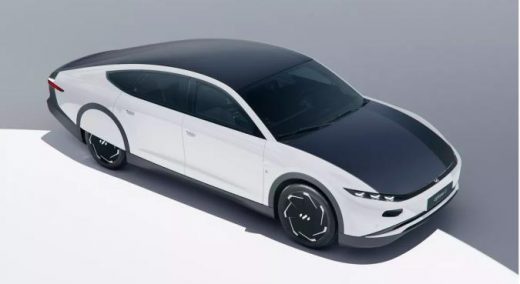Lightyear’s very pricey solar-powered car will go into production in late 2022
Lightyear’s very pricey solar-powered car will go into production in late 2022
The Lightyear 0’s price tag is a cool €250,000.


EV startup Lightyear debuted its first solar-powered vehicle this week, a sleek sedan called the Lightyear 0. The company gave us a peek at a production prototype of Lightyear 0 in 2019, and at first glance, not much has changed. The car is essentially an unconventional hybrid equipped with both a conventional 60-kilowatt-hour EV battery pack and solar panels on its roof, hood and hatch. The solar panels on the Lightyear 0 will charge automatically whenever the car is exposed to the sun — it doesn’t matter if it’s parked or driving.
The Lightyear 0 isn’t as much solar-powered as solar-assisted. In order to drive for long distances, the vehicle has to tap into its battery reserve. The car’s solar panels can provide 44 miles of range per day in a sunny climate, whereas its EV range is 388 miles. But for drivers with exceptionally short commutes or those who need their vehicle infrequently, the Lightyear 0 could allow them to no longer spend money on gas or charging. The company claims that those with a daily commute of 22 miles can drive the Lightyear 0 for two straight months in the Netherlands summer without needing to charge. Drivers in sunnier climates can go for longer. Lightyear claims that the sun can provide the Lightyear 0 with anywhere between 3,700 to 6,800 miles of range annually.
It’s important to note that Lightyear 0 owners will need to drive for a significantly long time in order to justify the vehicle’s purchase as a cost-saving measure. The Lightyear 0 will cost €250,000 (which amounts to roughly $263,262 USD), and the company only plans on making 946 units. But a more reasonably-priced vehicle is on the way. Lightyear recently also unveiled a prototype of a $33,000 solar-powered car, which is scheduled to go into production by 2025.
EV startup Lightyear debuted its first solar-powered vehicle this week, a sleek sedan called the Lightyear 0. The company gave us a peek at a production prototype of Lightyear 0 in 2019, and at first glance, not much has changed. The car is essentially an unconventional hybrid equipped with both a conventional 60-kilowatt-hour EV battery pack and solar panels on its roof, hood and hatch. The solar panels on the Lightyear 0 will charge automatically whenever the car is exposed to the sun — it doesn’t matter if it’s parked or driving.
The Lightyear 0 isn’t as much solar-powered as solar-assisted. In order to drive for long distances, the vehicle has to tap into its battery reserve. The car’s solar panels can provide 44 miles of range per day in a sunny climate, whereas its EV range is 388 miles. But for drivers with exceptionally short commutes or those who need their vehicle infrequently, the Lightyear 0 could allow them to no longer spend money on gas or charging. The company claims that those with a daily commute of 22 miles can drive the Lightyear 0 for two straight months in the Netherlands summer without needing to charge. Drivers in sunnier climates can go for longer. Lightyear claims that the sun can provide the Lightyear 0 with anywhere between 3,700 to 6,800 miles of range annually.
It’s important to note that Lightyear 0 owners will need to drive for a significantly long time in order to justify the vehicle’s purchase as a cost-saving measure. The Lightyear 0 will cost €250,000 (which amounts to roughly $ 263,262 USD), and the company only plans on making 946 units. But a more reasonably-priced vehicle is on the way. Lightyear recently also unveiled a prototype of a $ 33,000 solar-powered car, which is scheduled to go into production by 2025.
(27)


